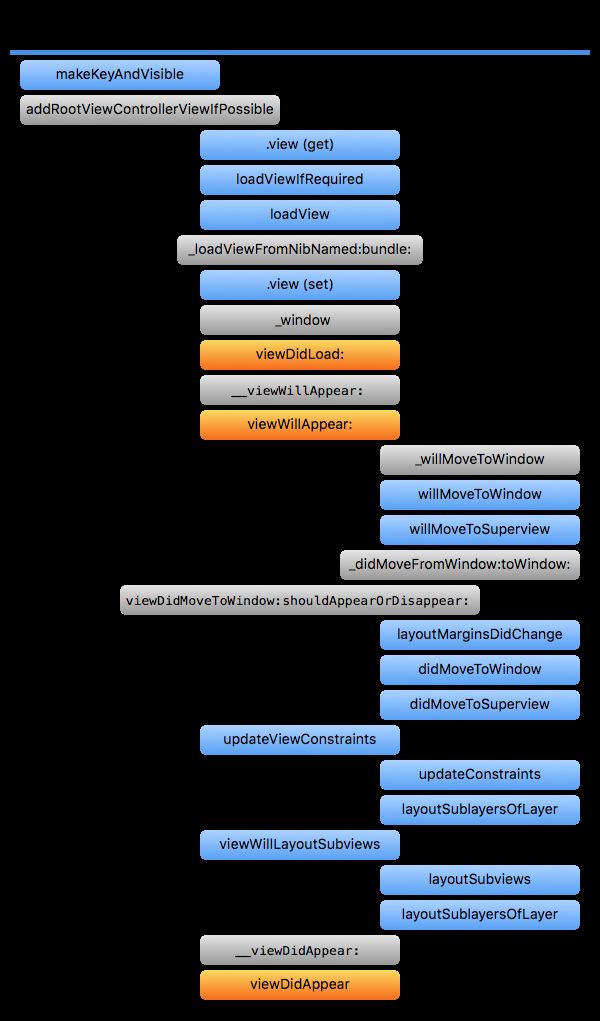- GESP认证C++编程真题解析 | B4004 寻找倍数
热爱编程的通信人
c++开发语言
学习C++从娃娃抓起!记录下CCF-GESP备考学习过程中的题目,记录每一个瞬间。附上汇总帖:GESP认证C++编程真题解析|汇总【题目描述】小杨有一个包含n个正整数的序列A=[a1,a2,…,an]A=[a_1,a_2,\dots,a_n]A=[a1,a2,…,an],他想知道是否存在i(1≤i≤n)i(1\lei\len)i(1≤i≤n)使得aia_iai是序列A中所有数的倍数。【输入】第一行
- Fluss 与数据湖的深度解析(二)
java
上一篇文章中我们说了Fluss与Paimon数据湖的三个相关问题:如何查询Paimon数据湖中的数据?如何查询Fluss和Paimon数据的“联合视图”?如何只查询Fluss中的数据?大家可以先去看这一篇文章,其中第二点如何查询Fluss和Paimon数据的“联合视图”中还遗留一个问题:在做数据查询的时候Fluss和Paimon数据湖是怎么保证数据一致性的,也就是事务的。还有第三点如何只查询Flu
- 【赵渝强老师】MongoDB文档级别的并发控制
数据库nosqlmongodb
MongoDB在执行写操作时,WiredTiger存储引擎会在文档级别进行并发控制。换句话说在同一时间点上,多个写操作能够修改同一个集合中的不同文档;而当多个写操作修改同一个文档时,必须以序列化方式执行。这意味着如果当前文档正在被修改,其他写操作必须等待该文档上的写操作完成之后才能进行修改。对于大部分的文档读写操作,WiredTiger引擎使用的都是乐观锁;而在数据库和集合级别,WiredTige
- angular 新语法糖学习一
延迟视图@defer是Angularv16引入的一项功能,用于优化组件的加载和渲染。它提供了一种延迟加载组件的方法,可以减少初始渲染时的开销,延迟加载(LazyLoading)主要是通过路由实现的。通过路由配置中的loadChildren属性,可以在需要时加载特定的模块。这种方式适合处理大型应用程序中的模块划分问题,但不能直接用于组件级别的延迟加载。随着angular的发展,在angularv16
- 【赵渝强老师】PostgreSQL的数据库
数据库postgresql
PostgreSQL的逻辑存储结构主要是指数据库中的各种数据库对象,包括:数据库集群、数据库、表、索引、视图等等。所有数据库对象都有各自的对象标识符oid(objectidentifiers),它是一个无符号的四字节整数,相关对象的oid都存放在相关的系统目录表中,比如数据库的oid和表的oid分别存放在pg_database,pg_class表中。下图展示了PostgreSQL数据库的逻辑存储结
- 【赵渝强老师】PostgreSQL的数据库集群
数据库postgresql
PostgreSQL的逻辑存储结构主要是指数据库中的各种数据库对象,包括:数据库集群、数据库、表、索引、视图等等。所有数据库对象都有各自的对象标识符oid(objectidentifiers),它是一个无符号的四字节整数,相关对象的oid都存放在相关的系统目录表中,比如数据库的oid和表的oid分别存放在pg_database,pg_class表中。下图展示了PostgreSQL数据库的逻辑存储结
- Python中的十六进制字节转换为字符串
时代在召唤吗
python前端开发语言Python
Python中的十六进制字节转换为字符串在Python编程中,有时我们需要将十六进制字节(hexbytes)转换为字符串。这种情况可能出现在网络通信、文件读取或加密解密等应用中。本文将介绍如何使用Python将十六进制字节转换为字符串,并提供相应的源代码示例。在Python中,可以使用binascii模块提供的函数来进行十六进制字节和字符串之间的转换。下面是一个示例代码,演示了如何将十六进制字节转
- 透过生活小故事,轻松理解大模型开发的五种核心方法
java
大家好,我是大圣,今天聊一下大模型开发的几种方法。大模型开发常用方法前言人工智能的世界听起来复杂神秘,但其实它与我们的日常生活有着许多相似之处。即使你对大模型开发一无所知,也能通过生活中的简单故事,理解其中的奥秘。本文将以贴近生活的五个场景,通俗易懂地讲解大模型开发中的五种核心方法:提示词工程和外部函数、Agent设计、RAG设计(检索增强生成)、微调以及预训练。让我们一同走进这些故事,揭开大模型
- Gateway网关
胡尔摩斯.
后端springcloudjavagateway
GatewayGateway网关是微服务架构中的重要组件,作为所有微服务的统一入口,扮演着“门卫”的角色。它负责处理进入系统的所有请求,并根据预设的规则将请求路由到相应的微服务进行处理。(需要进行服务的注册与发现)官网地址:SpringCloudGatewayhttps://docs.spring.io/spring-cloud-gateway/docs/4.0.4/reference/html/
- Linux 怎么在储存设备上创建文件系统?
linux
简介Linux中的mkfs命令用于在存储设备(例如分区、逻辑卷或整个磁盘)上创建文件系统。它代表makefilesystem(创建文件系统),是磁盘格式化的基本命令。语法mkfs[options]:目标设备,例如:/dev/sda1,/dev/sdb,/dev/loop0[options]:定制文件系统的选项支持的文件系统ext2/3/4:第二、第三和第四个扩展文件系统(mkfs.ext2、mkf
- 【赵渝强老师】Kubernetes中Pod的探针
在K8s集群中,当Pod处于运行状态时,kubelet通过使用探针(Probe)对容器的健康状态执行检查和诊断。Kubernetes支持的三种类型的探针。视频讲解如下:https://www.bilibili.com/video/BV1V1tFenEXL/?aid=113130512390...下面分别进行介绍。livenessProbe(存活探针)该类型的探针将检查Pod中的容器是否正在运行。如
- Dart语言的软件工程
Code侠客行
包罗万象golang开发语言后端
Dart语言的软件工程引言随着技术的快速发展,各种编程语言层出不穷。Dart语言作为Google开发的一种现代编程语言,近年来获得了越来越多的关注。其在移动应用开发、网页开发以及后端服务等领域的广泛应用,使得Dart在软件工程中扮演了越来越重要的角色。在本文中,我们将深入探讨Dart语言的特性、生态系统以及在实际软件工程中的应用。Dart语言简介Dart是一种面向对象、类定义的编程语言,具有明确的
- Objective-C语言的语法糖
Quantum&Coder
包罗万象golang开发语言后端
Objective-C语言的语法糖引言语法糖是编程语言设计中的一个重要概念。它指的是一种可以使得代码更易读和易写的语法形式。对于程序员来说,语法糖就像是糖衣,让一些看似复杂的逻辑变得简单明了。在编程语言中,好的语法糖能够提高开发效率,降低代码的复杂度。在这篇文章中,我们将深入探讨Objective-C语言中的语法糖,如何利用这些语法糖来优化我们的代码结构和可读性。一、Objective-C简介1.
- Lua语言的数据结构
Quantum&Coder
包罗万象golang开发语言后端
Lua语言的数据结构及其应用引言Lua是一种轻量级的编程语言,因其简单易学和高效灵活而广受欢迎。尤其在游戏开发、嵌入式系统以及其他需要高性能的场合中,Lua常常作为脚本语言被使用。在Lua中,数据结构的设计充分考虑了其简洁性与高效性,使得开发者能够更方便地进行各种数据处理。本文将深入探讨Lua语言中的主要数据结构及其应用,帮助读者更好地理解和使用Lua。Lua的数据结构概述Lua主要提供了两种内置
- Vue全流程--数据代理的理解以及在Vue中的应用
不清参
Vue全流程vue.js前端javascript
数据代理定义数据代理就是通过一个数据对象代理对另一个对象中的属性进行读/写需要用到的基础知识js的Object.defineProperty函数补充:(请大致读完后再看下文)Documentletnumber=18;letdata={//Modelname:"小王",sex:"男",url:'https://space.bilibili.com/1347961416?spm_id_from=333
- mysql_real_connect的概念和使用案例
青草地溪水旁
c语言学习mysql学习笔记mysqladb数据库
mysql_real_connect是MySQLCAPI中的一个函数,用于建立一个到MySQL数据库服务器的连接。这个函数尝试建立一个到MySQL服务器的连接,并返回一个MYSQL*类型的指针,这个指针可以用于后续的数据库操作。函数原型MYSQL*mysql_real_connect(MYSQL*mysql,constchar*host,constchar*user,constchar*passw
- 深入探讨Kafka:架构、实现原理与开发实践
Ceramist
kafka架构分布式
深入探讨Kafka:架构、实现原理与开发实践ApacheKafka是一个高性能的分布式流处理平台,广泛应用于实时数据处理、日志收集、消息发布/订阅等领域。本文将详细解析Kafka的架构、实现原理,并提供一些开发中的注意事项,帮助读者更好地理解和使用Kafka。一、Kafka简介Kafka由LinkedIn开发,并于2011年开源,2012年成为Apache顶级项目。Kafka的设计目标是为处理实时
- 摆脱焦虑,释放大脑——GTD(Get Things Done)的核心与深度实践
Qingzong_MA
职场小白进阶篇职场和发展
在我们的日常工作中,总会有那么一刻,突然间产生强烈的焦虑感:明明有一件重要的事还没做,然而它又像消失在时光流转中的迷雾一样,让人抓不住。你知道它很重要,可它却摆脱了大脑的捕捉,像空气一样无形、无声。一旦在老板的晨会上被点名,心头的五雷轰顶刹那间提醒了你:“原来是这个!”这种记忆的疏忽,正是许多人管理时间的最大障碍。无论是灵感的闪现,还是老板交代的琐碎任务,脑海中的瞬时遗忘都成为我们面临的最真实困境
- idea中的tomcat vm_IntelliJ IDEA Tomcat配置详解(图文)
涟雪沧
idea中的tomcatvm
查找该问题的童鞋我相信IntelliJIDEA,Tomcat的下载,JDK等其他的配置都应该完成了,那我直接进入正题了。1>进入EditConfigurations2>点击+,选择Tomcat服务器,如果是本地Tomcat选择Local3>TomcatServer->Unnamed->Server->Applicationserver的Configuration,找到本地Tomcat服务器,再点击
- python取列表前3个元素_Python3基础 list pop(含参) 取出列表中的指定索引的元素
weixin_39848097
python取列表前3个元素
Python:3.7.0OS:Ubuntu18.04.1LTSIDE:PyCharm2018.2.4Conda:4.5.11typesetting:Markdowncode"""@Author:行初心@Date:18-9-23@Blog:www.cnblogs.com/xingchuxin@Gitee:gitee.com/zhichengjiu"""defmain():member=['黄帝内经'
- 【vite】vite配置文件 vite.config.js
小羊不乖
前端前端框架node.js前端javascriptvue.jsvue
文章目录声明环境变量配置文件`.env.dev`开发环境`.env.prod`生产环境在配置中使用环境变量Vite中的plugin配置@vitejs/plugin-vue:默认插件@vitejs/plugin-legacy:兼容旧版浏览器unplugin-auto-import/vite:自动导入Vue和Vue相关库的APIunplugin-vue-components/vite:自动注册Vue组
- 用java 实现 Add Two Numbers 两数相加(LeetCode算法)
用心去追梦
算法javaleetcode
LeetCode上的“AddTwoNumbers”问题要求我们实现一个函数,该函数接收两个非空链表作为输入,每个链表表示一个非负整数的逆序表示(即个位在链表头),链表中的每个节点包含一个数字(0-9)。任务是将这两个数相加,并以同样的链表格式返回和。下面是用Java实现这个算法的方法:classListNode{intval;ListNodenext;ListNode(intx){val=x;}}
- 工具链 之 Vite 常见的共享选项配置(二)
**之火
前端工具链Vite前端工具链Vite
这些配置通常包括插件、别名、CSS预处理器设置。1.插件(Plugins)插件是Vite生态系统中的核心部分,用于扩展Vite的功能。一些插件(如@vitejs/plugin-vue对于Vue项目)是项目所必需的,并且在所有环境中都应该被包含。//vite.config.jsimport{defineConfig}from'vite'importvuefrom'@vitejs/plugin-vue
- 通俗易懂之样条函数的原理、计算、案例、python实现
智识小站
可解释机器学习python算法
理解样条函数(SplineFunctions)是掌握广义加性模型(GAMs)及其他非线性回归技术的关键。样条函数通过分段多项式的形式,在不同区间内灵活地拟合数据,从而捕捉复杂的非线性关系。本文将更为详细地讲解样条函数的原理、具体示例以及在Python中的实现方法。如果这篇文章对你有一点点的帮助,欢迎点赞、关注、收藏、转发、评论哦!我也会在微信公众号“智识小站”坚持分享更多内容,以期记录成长、普及技
- DICOM图像处理:深入解析DICOM彩色图像中的Planar配置及其对像素数据解析处理的实现
猿享天开
DICOM医学影像知识图像处理医学影像DICOMPlanar
引言在DICOM(DigitalImagingandCommunicationsinMedicine)标准中,彩色图像的存储与显示涉及多个关键属性,其中**PlanarConfiguration(平面配置)**属性(标签(0028,0006))尤为重要。当遇到彩色DICOM图像在浏览时被错误地分割为9张小图,而实际应显示为一张完整的图像的问题,很可能与PlanarConfiguration属性的解
- 第9篇:从入门到精通:深入理解Python中的类与对象
猿享天开
python从入门到精通python开发语言
第9篇:类与对象内容简介本篇文章将深入探讨Python中的类与对象概念。您将学习如何定义类、创建对象,理解属性与方法的区别与用法,掌握构造函数的使用,以及了解self关键字的作用。通过丰富的代码示例,您将能够熟练运用面向对象编程(OOP)在Python中的核心概念,提升您的编程能力和代码组织水平。目录类与对象概述什么是类与对象面向对象编程的优势定义类与创建对象类的基本结构创建对象实例属性与方法类属
- Windows 蓝牙驱动开发-蓝牙设备栈
程序员王马
Windows蓝牙驱动开发windows驱动开发
蓝牙设备栈蓝牙驱动程序堆栈包含Microsoft为蓝牙协议提供支持的核心部分。有了这个堆栈,已启用蓝牙的设备可以彼此定位并建立连接。在此类连接中,设备可以通过各种应用程序交换数据并彼此交互。下图显示了蓝牙驱动程序堆栈中的模块,以及WindowsVista及更高版本中不包含的可能的自定义用户模式和内核模式驱动程序。这些自定义驱动程序称为配置文件驱动程序。用户模式用户模式应用程序:通过已发布的API访
- 构建功能-vite、rollup
小天呐
前端工程化vite
一、vite基础1.简介vite是一个构建工具,相较于webpack,vite采用了不同的运行方式:开发阶段:在开发阶段,Vite的工作流程如下:依赖预构建:Vite会先将项目中的第三方依赖(如node_modules中的包)进行预构建。它使用了esbuild这个超快的构建工具进行依赖的打包,将其他规范的代码转换成esmodule规范,然后放到当前目录下的node_modules/.vite/de
- 汇编 DA A十进制调整指令
又又(づ ●─● )づ
开发语言
二进制加法指令不能完全适用于BCD码十进制的加法运算,故应对压缩的BCD码的加法结果需要进行有条件的修正。出错原因及调整方法BCD码(4位二进制编码)共有十六个编码,但只用了其中的10个,剩余六个就没有用到。而这六个没有用到的编码为无效编码。故1位BCD码加法运算出错的情况有两种:1)相加结果大于9无进位,及已经进入无效编码区;2)相加结果有进位,及已经跳过无效编码区;无论哪一种出错情况,都是因为
- 3.C++中的判断语句
赵鑫亿
C++基础入门c++开发语言
C++中的判断语句一、if语句if语句是最基本的判断结构,用于根据条件执行不同的代码块。基本形式:if(condition){//当condition为真时执行的代码块}例如:#includeintmain(){intnum=10;if(num>5){std::coutintmain(){intnum=3;if(num>5){std::coutintmain(){intnum=7;if(num>1
- java线程Thread和Runnable区别和联系
zx_code
javajvmthread多线程Runnable
我们都晓得java实现线程2种方式,一个是继承Thread,另一个是实现Runnable。
模拟窗口买票,第一例子继承thread,代码如下
package thread;
public class ThreadTest {
public static void main(String[] args) {
Thread1 t1 = new Thread1(
- 【转】JSON与XML的区别比较
丁_新
jsonxml
1.定义介绍
(1).XML定义
扩展标记语言 (Extensible Markup Language, XML) ,用于标记电子文件使其具有结构性的标记语言,可以用来标记数据、定义数据类型,是一种允许用户对自己的标记语言进行定义的源语言。 XML使用DTD(document type definition)文档类型定义来组织数据;格式统一,跨平台和语言,早已成为业界公认的标准。
XML是标
- c++ 实现五种基础的排序算法
CrazyMizzz
C++c算法
#include<iostream>
using namespace std;
//辅助函数,交换两数之值
template<class T>
void mySwap(T &x, T &y){
T temp = x;
x = y;
y = temp;
}
const int size = 10;
//一、用直接插入排
- 我的软件
麦田的设计者
我的软件音乐类娱乐放松
这是我写的一款app软件,耗时三个月,是一个根据央视节目开门大吉改变的,提供音调,猜歌曲名。1、手机拥有者在android手机市场下载本APP,同意权限,安装到手机上。2、游客初次进入时会有引导页面提醒用户注册。(同时软件自动播放背景音乐)。3、用户登录到主页后,会有五个模块。a、点击不胫而走,用户得到开门大吉首页部分新闻,点击进入有新闻详情。b、
- linux awk命令详解
被触发
linux awk
awk是行处理器: 相比较屏幕处理的优点,在处理庞大文件时不会出现内存溢出或是处理缓慢的问题,通常用来格式化文本信息
awk处理过程: 依次对每一行进行处理,然后输出
awk命令形式:
awk [-F|-f|-v] ‘BEGIN{} //{command1; command2} END{}’ file
[-F|-f|-v]大参数,-F指定分隔符,-f调用脚本,-v定义变量 var=val
- 各种语言比较
_wy_
编程语言
Java Ruby PHP 擅长领域
- oracle 中数据类型为clob的编辑
知了ing
oracle clob
public void updateKpiStatus(String kpiStatus,String taskId){
Connection dbc=null;
Statement stmt=null;
PreparedStatement ps=null;
try {
dbc = new DBConn().getNewConnection();
//stmt = db
- 分布式服务框架 Zookeeper -- 管理分布式环境中的数据
矮蛋蛋
zookeeper
原文地址:
http://www.ibm.com/developerworks/cn/opensource/os-cn-zookeeper/
安装和配置详解
本文介绍的 Zookeeper 是以 3.2.2 这个稳定版本为基础,最新的版本可以通过官网 http://hadoop.apache.org/zookeeper/来获取,Zookeeper 的安装非常简单,下面将从单机模式和集群模式两
- tomcat数据源
alafqq
tomcat
数据库
JNDI(Java Naming and Directory Interface,Java命名和目录接口)是一组在Java应用中访问命名和目录服务的API。
没有使用JNDI时我用要这样连接数据库:
03. Class.forName("com.mysql.jdbc.Driver");
04. conn
- 遍历的方法
百合不是茶
遍历
遍历
在java的泛
- linux查看硬件信息的命令
bijian1013
linux
linux查看硬件信息的命令
一.查看CPU:
cat /proc/cpuinfo
二.查看内存:
free
三.查看硬盘:
df
linux下查看硬件信息
1、lspci 列出所有PCI 设备;
lspci - list all PCI devices:列出机器中的PCI设备(声卡、显卡、Modem、网卡、USB、主板集成设备也能
- java常见的ClassNotFoundException
bijian1013
java
1.java.lang.ClassNotFoundException: org.apache.commons.logging.LogFactory 添加包common-logging.jar2.java.lang.ClassNotFoundException: javax.transaction.Synchronization
- 【Gson五】日期对象的序列化和反序列化
bit1129
反序列化
对日期类型的数据进行序列化和反序列化时,需要考虑如下问题:
1. 序列化时,Date对象序列化的字符串日期格式如何
2. 反序列化时,把日期字符串序列化为Date对象,也需要考虑日期格式问题
3. Date A -> str -> Date B,A和B对象是否equals
默认序列化和反序列化
import com
- 【Spark八十六】Spark Streaming之DStream vs. InputDStream
bit1129
Stream
1. DStream的类说明文档:
/**
* A Discretized Stream (DStream), the basic abstraction in Spark Streaming, is a continuous
* sequence of RDDs (of the same type) representing a continuous st
- 通过nginx获取header信息
ronin47
nginx header
1. 提取整个的Cookies内容到一个变量,然后可以在需要时引用,比如记录到日志里面,
if ( $http_cookie ~* "(.*)$") {
set $all_cookie $1;
}
变量$all_cookie就获得了cookie的值,可以用于运算了
- java-65.输入数字n,按顺序输出从1最大的n位10进制数。比如输入3,则输出1、2、3一直到最大的3位数即999
bylijinnan
java
参考了网上的http://blog.csdn.net/peasking_dd/article/details/6342984
写了个java版的:
public class Print_1_To_NDigit {
/**
* Q65.输入数字n,按顺序输出从1最大的n位10进制数。比如输入3,则输出1、2、3一直到最大的3位数即999
* 1.使用字符串
- Netty源码学习-ReplayingDecoder
bylijinnan
javanetty
ReplayingDecoder是FrameDecoder的子类,不熟悉FrameDecoder的,可以先看看
http://bylijinnan.iteye.com/blog/1982618
API说,ReplayingDecoder简化了操作,比如:
FrameDecoder在decode时,需要判断数据是否接收完全:
public class IntegerH
- js特殊字符过滤
cngolon
js特殊字符js特殊字符过滤
1.js中用正则表达式 过滤特殊字符, 校验所有输入域是否含有特殊符号function stripscript(s) { var pattern = new RegExp("[`~!@#$^&*()=|{}':;',\\[\\].<>/?~!@#¥……&*()——|{}【】‘;:”“'。,、?]"
- hibernate使用sql查询
ctrain
Hibernate
import java.util.Iterator;
import java.util.List;
import java.util.Map;
import org.hibernate.Hibernate;
import org.hibernate.SQLQuery;
import org.hibernate.Session;
import org.hibernate.Transa
- linux shell脚本中切换用户执行命令方法
daizj
linuxshell命令切换用户
经常在写shell脚本时,会碰到要以另外一个用户来执行相关命令,其方法简单记下:
1、执行单个命令:su - user -c "command"
如:下面命令是以test用户在/data目录下创建test123目录
[root@slave19 /data]# su - test -c "mkdir /data/test123"
- 好的代码里只要一个 return 语句
dcj3sjt126com
return
别再这样写了:public boolean foo() { if (true) { return true; } else { return false;
- Android动画效果学习
dcj3sjt126com
android
1、透明动画效果
方法一:代码实现
public View onCreateView(LayoutInflater inflater, ViewGroup container, Bundle savedInstanceState)
{
View rootView = inflater.inflate(R.layout.fragment_main, container, fals
- linux复习笔记之bash shell (4)管道命令
eksliang
linux管道命令汇总linux管道命令linux常用管道命令
转载请出自出处:
http://eksliang.iteye.com/blog/2105461
bash命令执行的完毕以后,通常这个命令都会有返回结果,怎么对这个返回的结果做一些操作呢?那就得用管道命令‘|’。
上面那段话,简单说了下管道命令的作用,那什么事管道命令呢?
答:非常的经典的一句话,记住了,何为管
- Android系统中自定义按键的短按、双击、长按事件
gqdy365
android
在项目中碰到这样的问题:
由于系统中的按键在底层做了重新定义或者新增了按键,此时需要在APP层对按键事件(keyevent)做分解处理,模拟Android系统做法,把keyevent分解成:
1、单击事件:就是普通key的单击;
2、双击事件:500ms内同一按键单击两次;
3、长按事件:同一按键长按超过1000ms(系统中长按事件为500ms);
4、组合按键:两个以上按键同时按住;
- asp.net获取站点根目录下子目录的名称
hvt
.netC#asp.nethovertreeWeb Forms
使用Visual Studio建立一个.aspx文件(Web Forms),例如hovertree.aspx,在页面上加入一个ListBox代码如下:
<asp:ListBox runat="server" ID="lbKeleyiFolder" />
那么在页面上显示根目录子文件夹的代码如下:
string[] m_sub
- Eclipse程序员要掌握的常用快捷键
justjavac
javaeclipse快捷键ide
判断一个人的编程水平,就看他用键盘多,还是鼠标多。用键盘一是为了输入代码(当然了,也包括注释),再有就是熟练使用快捷键。 曾有人在豆瓣评
《卓有成效的程序员》:“人有多大懒,才有多大闲”。之前我整理了一个
程序员图书列表,目的也就是通过读书,让程序员变懒。 写道 程序员作为特殊的群体,有的人可以这么懒,懒到事情都交给机器去做,而有的人又可
- c++编程随记
lx.asymmetric
C++笔记
为了字体更好看,改变了格式……
&&运算符:
#include<iostream>
using namespace std;
int main(){
int a=-1,b=4,k;
k=(++a<0)&&!(b--
- linux标准IO缓冲机制研究
音频数据
linux
一、什么是缓存I/O(Buffered I/O)缓存I/O又被称作标准I/O,大多数文件系统默认I/O操作都是缓存I/O。在Linux的缓存I/O机制中,操作系统会将I/O的数据缓存在文件系统的页缓存(page cache)中,也就是说,数据会先被拷贝到操作系统内核的缓冲区中,然后才会从操作系统内核的缓冲区拷贝到应用程序的地址空间。1.缓存I/O有以下优点:A.缓存I/O使用了操作系统内核缓冲区,
- 随想 生活
暗黑小菠萝
生活
其实账户之前就申请了,但是决定要自己更新一些东西看也是最近。从毕业到现在已经一年了。没有进步是假的,但是有多大的进步可能只有我自己知道。
毕业的时候班里12个女生,真正最后做到软件开发的只要两个包括我,PS:我不是说测试不好。当时因为考研完全放弃找工作,考研失败,我想这只是我的借口。那个时候才想到为什么大学的时候不能好好的学习技术,增强自己的实战能力,以至于后来找工作比较费劲。我
- 我认为POJO是一个错误的概念
windshome
javaPOJO编程J2EE设计
这篇内容其实没有经过太多的深思熟虑,只是个人一时的感觉。从个人风格上来讲,我倾向简单质朴的设计开发理念;从方法论上,我更加倾向自顶向下的设计;从做事情的目标上来看,我追求质量优先,更愿意使用较为保守和稳妥的理念和方法。
&

